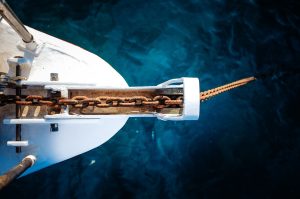
Anyone who’s anchored a boat for more than fifteen minutes knows that it’s not as stable a process as it seems. The boat shifts. The winds change. Other boats come and go. That’s why anchoring at night can be so precarious. If you have to do it, make sure that you understand everything involved and take the proper precautions. Here are some tips to help.
What Changes as You Anchor at Night
Setting an anchor during the day is a straightforward process. You set the anchor, monitor the boat, and bring the anchor back up when you need it. You lose touch with the slow changes happening around you. But if you set an anchor at night and don’t monitor it with due diligence, you may not notice the following changes that could impact the process:
- Position and current. Is there a current that will affect your boat’s position? Even on secluded lakes, wind factor alone can change this.
- Ebb and flow of the tide. Anchoring at high tide can sometimes mean getting stuck if you leave the boat unattended.
- Changing boating conditions—i.e., traffic from other boats. Traffic is an always-changing situation, which means you’ll have to stay on top of it. Are you in a main channel of traffic without knowing it?
- Changing wind conditions. Shifting winds can create more drag on your boat than you might imagine. Faster wind or changing wind conditions can put your boat in a spot completely different from where you planned if you don’t supervise your boat.

Rules For Anchoring At Night
Many novice boat owners might consider anchoring to be a passive activity. You set the anchor and you can take your mind off it, right? Unfortunately, that’s not the case. Boaters are often required by local laws to have someone monitoring the boat’s status while anchored. In the case of an all-night anchor, that meant taking turns staying on watch. The Coast Guard recognizes that not every vessel maintains a lookout while at anchor, but it also admonishes skippers and crews who sleep through the night.
Although there are modern alarms that can aid with boat monitoring, the Coast Guard also states that these are insufficient.
How to Anchor at Night
Sometimes, you find yourself in a situation at night that requires anchoring. It helps to be prepared. Here’s what you need to know:
- Take full stock. Keep track of the tide, wind, traffic, and changing conditions. The more you know, the better you’ll be able to position your boat in the right place.
- Post someone on watch. Supervision is necessary because, even with an anchor, the conditions can and will change.
- Check in regularly. If you’re a boat’s captain, make sure that you check the anchor point, the chains, and any change in conditions regularly—even if you’re not the one on watch.
- Keep your lights on. You want to be as visible as possible at night to ensure other boats can see you.
- Know the rules. Is your boat supposed to be in this area at night?
Having the flexibility to anchor at night gives you freedom as a boat owner. But like any freedom, it comes with responsibilities. Know the local rules, know your situation, and be prepared to monitor the boat at all times.
Caring For Your Boat
To keep your boat in the best condition possible, be sure to browse the boat cleaning, restoration, and maintenance products available here at BoatLIFE!




